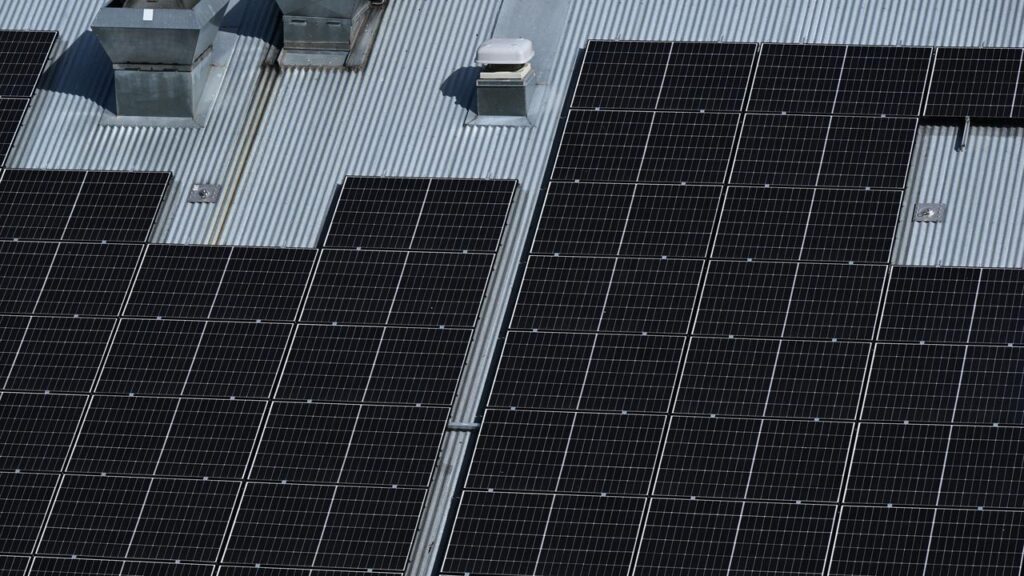Bright idea for businesses to power household bill cuts
Jennifer Dudley-Nicholson |

Big buildings with empty rooftops could be the key to lowering power bills for Australian households and cutting greenhouse gas emissions, according to a trial proposed by a major energy firm.
Ausgrid’s proposal, announced on Tuesday, would tap into solar panels on commercial and industrial properties and deliver cheaper, renewable power to their residential neighbours.
If successful, the company estimates it could cut consumer power bills in trial areas by up to $200 a year, delivering savings for apartment residents and renters who might otherwise be unable to access the technology.

The proposal comes amid pressure for energy companies and the government to ramp up renewable power projects to meet the nation’s 2050 net-zero target and as a record number of households install solar batteries.
Ausgrid’s five-year solar power trial, called Community Power Network, is proposed for 32,000 households in the Botany and Mascot areas within Sydney and in the NSW Central Coast suburb of Charmhaven.
The power plan was designed to address two major issues: underused commercial and industrial rooftops and inequitable access to solar power, Ausgrid market development and strategy group executive Tim Jarratt said.
“Australia has had phenomenal success with rooftop solar – over a third of households have it … but it’s important to remember that if one third of customers have it, two thirds don’t,” he told AAP.
“The reasons that people don’t have (solar) and aren’t able to benefit from really cheap power off their own roofs is they’re in apartments, they’re renting or they don’t have the capital to spare.”
The plan would involve Ausgrid installing $84 million worth of batteries to its network, and encourage a $76 million investment in rooftop solar panels from third parties, such as property owners, by offering generous feed-in tariffs.

Solar power generated in the trial would be stored and delivered to customers during peak periods at lower rates in a move the company estimated could save $22.9 million across five years or between $150 and $200 on annual household power bills.
“People have often described this glut of solar slashing around the network in the day as a problem and we’ve tried to look at it in a different way,” Mr Jarratt said.
“Electricity generated from your rooftop or a neighbouring rooftop that’s consumed locally is by far the cheapest power source that Australian consumers have.”
The proposal, under review by the Australian Energy Regulator, would be underwritten by Ausgrid, with no charges to customers if it failed to produce profits.
The energy regulator will hold three public workshops on the proposal in late August before deciding whether to approve the plan.
Solar power accounted for eight per cent of energy in Australia’s market in the past year, according to the Australian Energy Market Operator, overtaking gas at seven per cent.
The country’s climate targets include a goal to generate 82 per cent of electricity from renewable sources by 2030.
AAP


